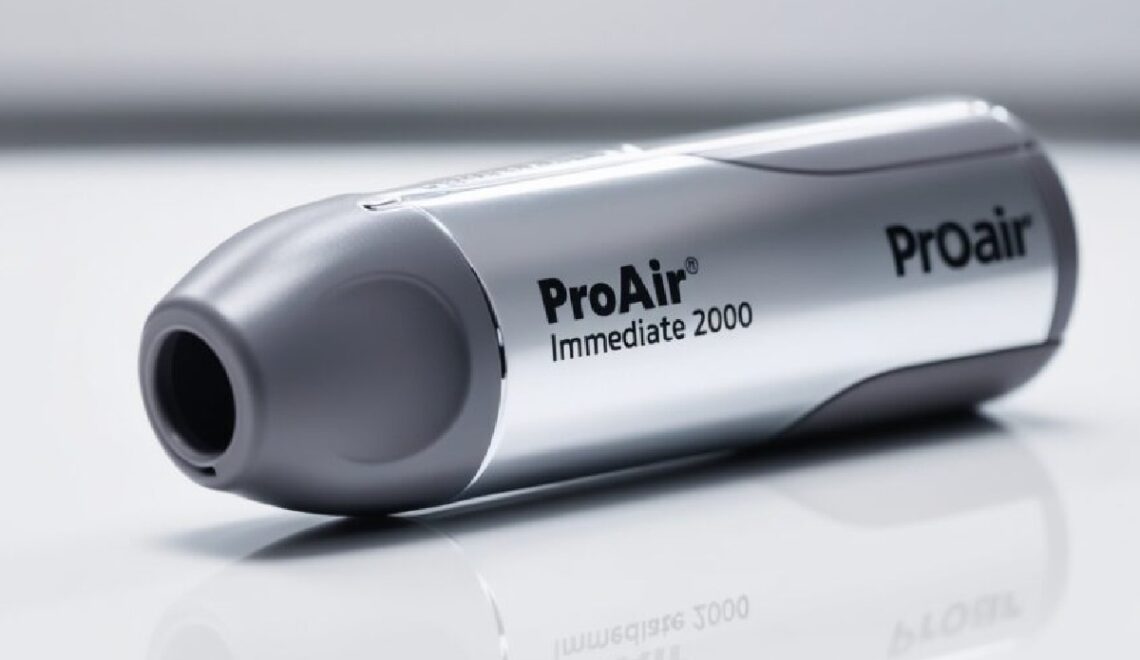Immediate 2000 Proair: What You Need to Know

Immediate 2000 Proair – Living with asthma or other breathing conditions isn’t always easy, but having the right inhaler can make a world of difference.
I’ve helped countless patients understand their inhalers, and ProAir is one that comes up in conversation a lot.
Let’s break down everything you need to know about ProAir inhalers, from how they work to when you should use them.
What Is Immediate 2000 Proair and How Does It Work?
ProAir is a brand of albuterol inhaler that works as a bronchodilator.
In simple terms, it helps open up your airways when you’re having trouble breathing.
It’s what we call a “rescue inhaler” because it provides quick relief when you need it most.
The medicine works within minutes to relax the muscles around your airways, making it easier to breathe.
Types of Immediate 2000 Proair Available
There are several versions of ProAir you might come across:
- ProAir HFA (traditional inhaler with a pressurized canister)
- ProAir RespiClick (dry powder inhaler that doesn’t need a propellant)
- ProAir Digihaler (smart inhaler that tracks your usage)
Each type has its own benefits, and your doctor can help you choose the right one.
When Should You Use ProAir?
I always tell my patients that timing is everything with rescue inhalers.
Use ProAir when:
- You’re experiencing sudden asthma symptoms
- You need quick relief from wheezing
- You’re about to exercise and want to prevent symptoms
- You’re exposed to known triggers
The key is keeping it handy – you never know when you might need it.
How to Use Your ProAir Inhaler Correctly
Getting the most from your inhaler means using it properly.
Here’s my step-by-step guide:
- Remove the cap and shake well
- Stand or sit up straight
- Breathe out completely
- Place the mouthpiece between your lips
- Start breathing in slowly and press down on the canister
- Keep breathing in steadily and deeply
- Hold your breath for 10 seconds
- Breathe out slowly
Pro tip: Using a spacer can make this process even more effective.
Common Side Effects to Watch For
Being informed about side effects helps you know what’s normal and what isn’t.
You might experience:
- Feeling shaky or jittery
- Rapid heartbeat
- Throat irritation
- Headache
- Nervousness
Most side effects are mild and go away on their own.
Storage and Maintenance Tips
Taking care of your inhaler ensures it works when you need it most.
Keep these points in mind:
- Store at room temperature
- Keep away from heat and sunlight
- Check the expiration date regularly
- Clean the mouthpiece weekly
- Keep track of how many doses are left
Frequently Asked Questions
How long does a ProAir inhaler last?
Most ProAir inhalers contain 200 doses and typically last about a month with regular use.
Can I use ProAir every day?
While it’s safe to use when needed, using it more than 2-3 times per week might mean your asthma isn’t well controlled.
What’s the difference between ProAir and other albuterol inhalers?
The active ingredient is the same, but the delivery devices and propellants might differ.
Is ProAir covered by insurance?
Most insurance plans cover ProAir, but coverage varies. Generic versions might be available at a lower cost.
Can I use ProAir if I’m pregnant?
Always consult your doctor, but ProAir is generally considered safe during pregnancy when needed.
When to Talk to Your Doctor
Sometimes you need professional input. Reach out to your healthcare provider if:
- Your ProAir isn’t helping like it used to
- You’re using it more than usual
- You experience severe side effects
- You’re not sure if you’re using it correctly
The Bottom Line
Immediate 2000 Proair is a reliable rescue inhaler that can provide quick relief when breathing becomes difficult.
Understanding how to use it properly and maintaining it well can make a big difference in managing your respiratory health.
Remember, while ProAir is great for quick relief, if you’re using it more than a few times a week, it’s worth talking to your doctor about your overall asthma management plan.
Keep track of your usage, stay aware of how your body responds, and don’t hesitate to ask questions when you need to.
Most importantly, always keep your inhaler handy – because breathing easier is what it’s all about.
